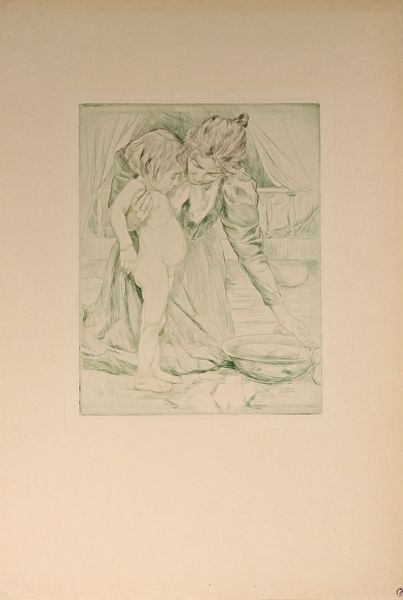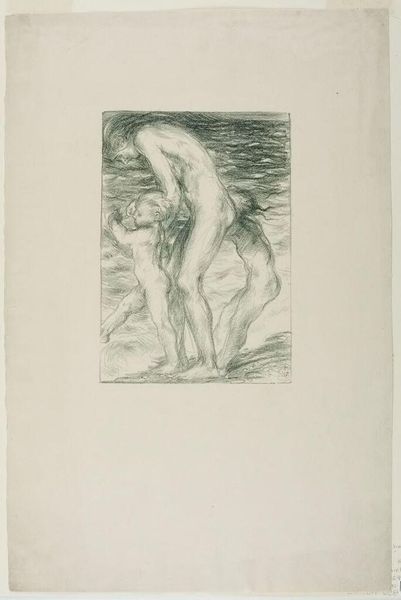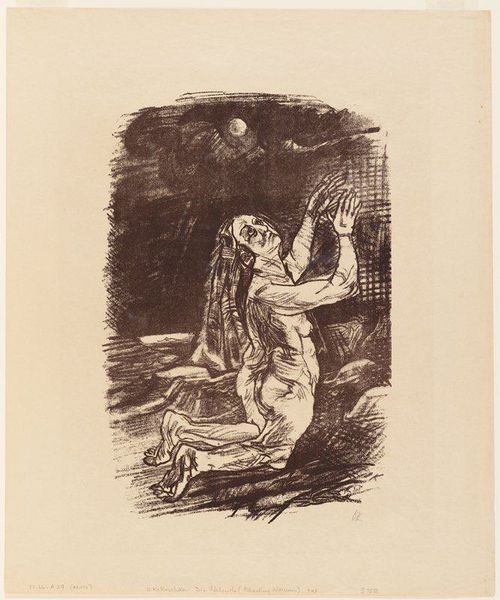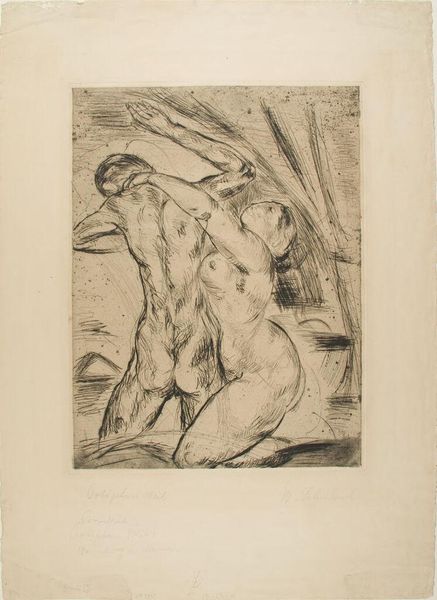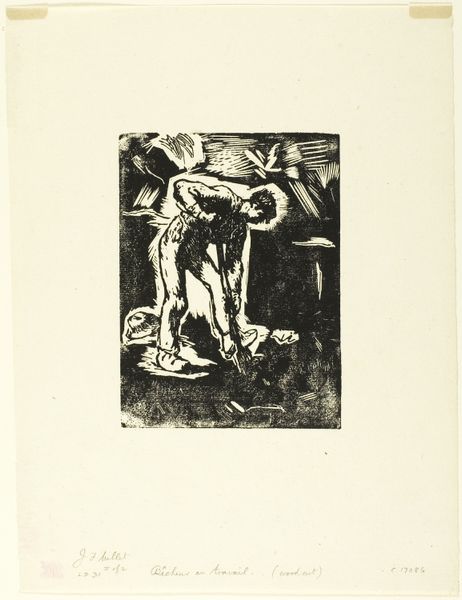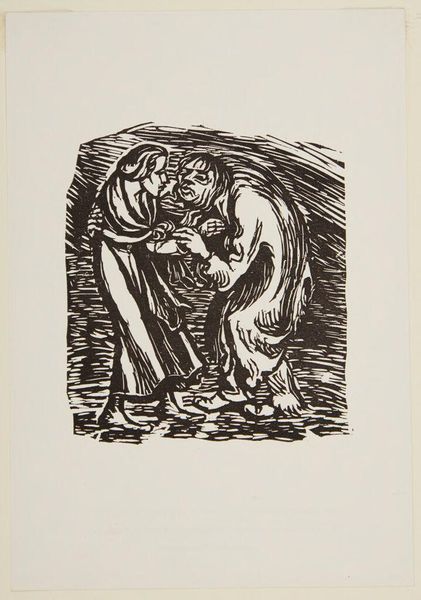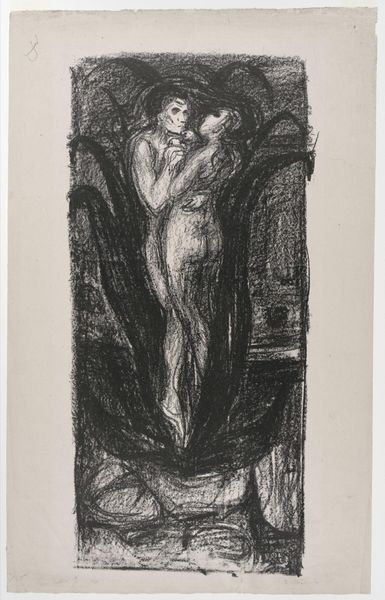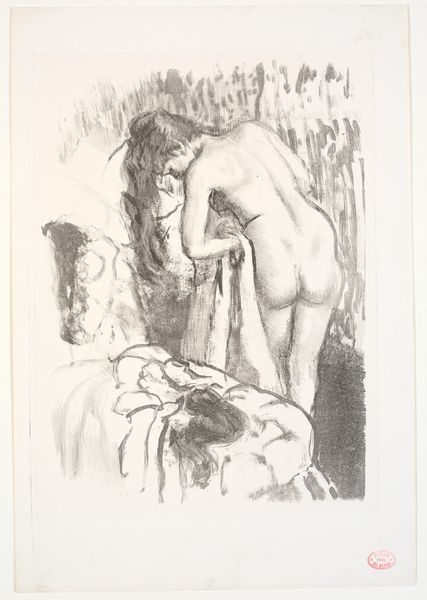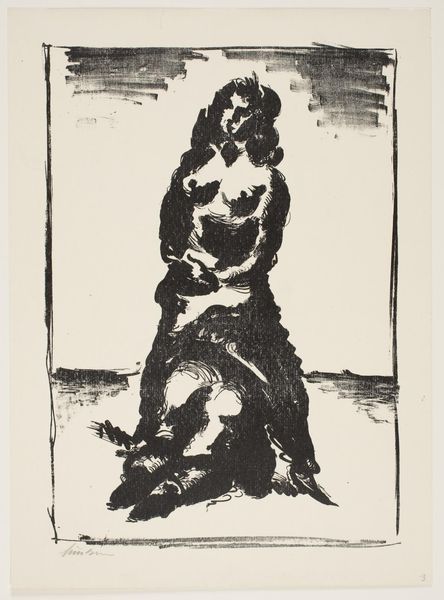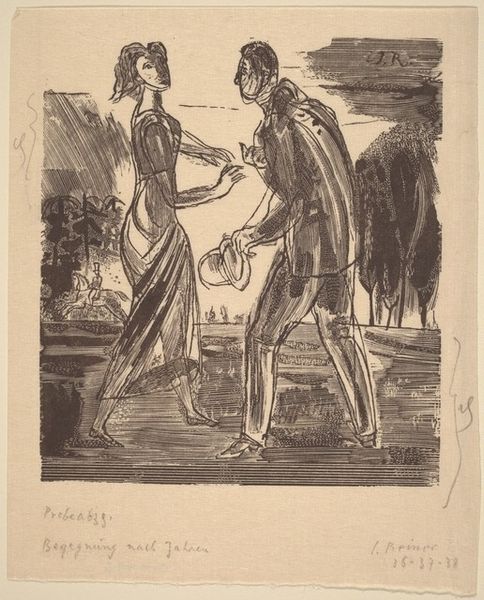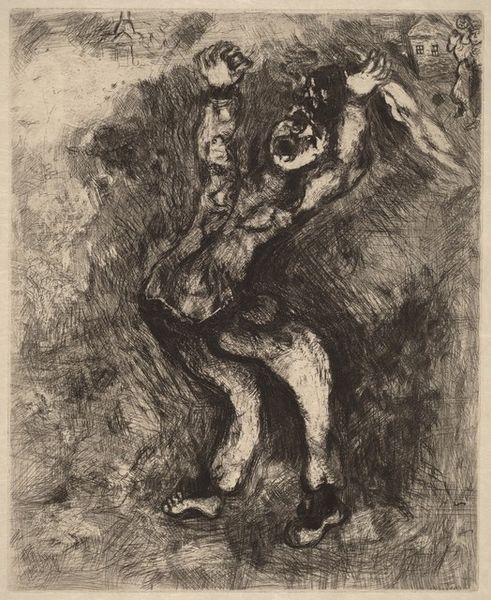
drawing, print, etching
#
portrait
#
drawing
# print
#
etching
#
figuration
#
genre-painting
#
nude
Copyright: Public domain
Curator: Here we have "Footbath," an etching by Charles Maurin. Although it doesn’t have a precise date, his style certainly situates it within late 19th-century printmaking. The work showcases a mother figure carefully attending to a child, perhaps preparing them for bed. Editor: The crosshatching gives this such an intimate and almost unsettling feeling; the texture and close proximity add so much detail and dimension. There’s a fragility here. It feels…vulnerable. Curator: I agree about the vulnerability. The choice of etching underscores the importance of considering the socioeconomic and cultural contexts of the period. This technique was relatively accessible, often appealing to artists interested in depicting scenes of everyday life and social realism. We see a genre painting; a quiet, tender moment elevated through the act of art. Editor: Precisely. The image avoids idealization. It's domestic, and it brings to the surface ideas about who holds that kind of nurturing power and at what personal cost, while considering the politics of representation. Where are depictions of Black mothers portrayed like this, for instance? Where is this tenderness afforded? Curator: These are important questions to consider. The portrayal, while tender, could be seen through a critical lens examining the frequent fetishization or idealization of domesticity in art during this period. It begs to question what social standards and cultural expectations were placed on women. It also might be an indication of how intimate family scenes were becoming increasingly mainstream subjects for artists and the art-viewing public. Editor: That tension between tender representation and social expectation really resonates. And I can't help but think about contemporary conversations around motherhood, where women continue to bear an unequal burden in caregiving. Seeing a piece like this challenges me to reflect on how those historical patterns are echoed today. Curator: Indeed. The print is evidence of the rise of interest in private life in the public sphere during Maurin’s time, but today the work prompts us to consider whose lives were made invisible in that equation, and who still struggles to have their experiences valued in the arts and broader society. Editor: Thank you. Looking at it with a sharper understanding of context helps amplify those hidden aspects. Curator: A closer examination makes this scene much richer, and brings its socio-cultural impact to the fore.
Comments
No comments
Be the first to comment and join the conversation on the ultimate creative platform.
